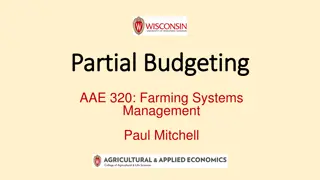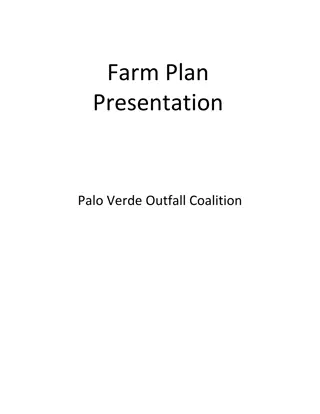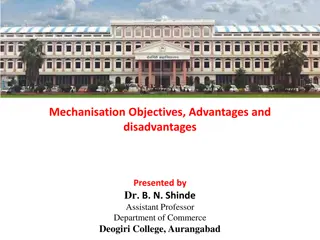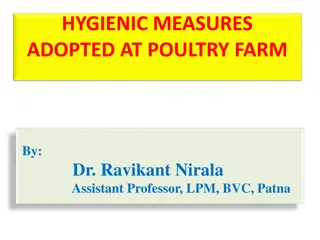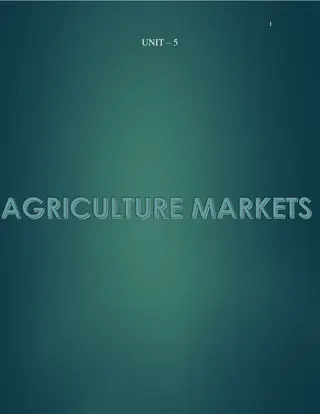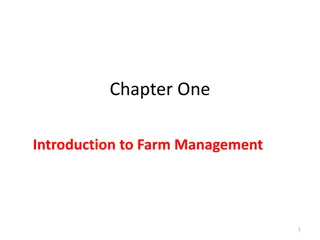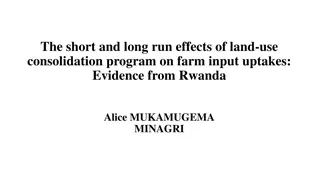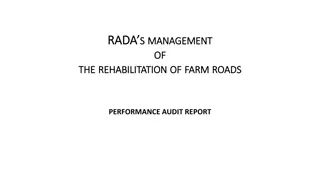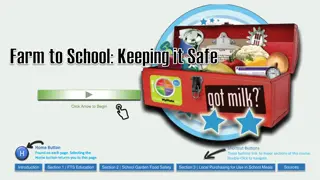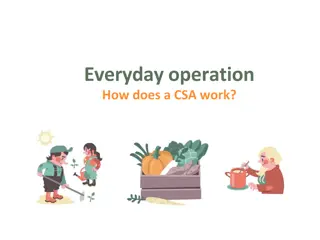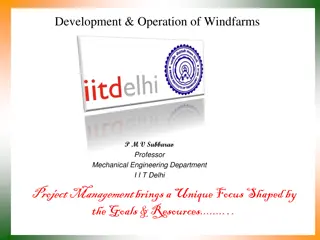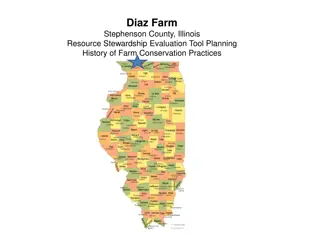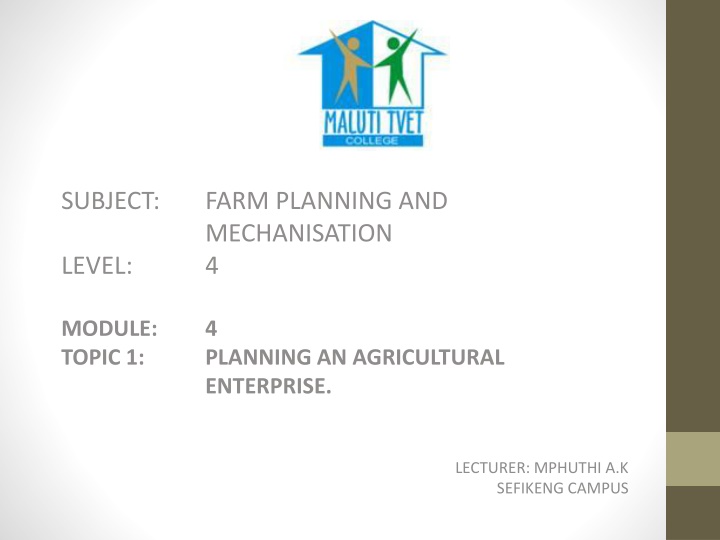
Effective Fruit Harvesting and Post-Harvest Procedures for Agricultural Enterprises
Learn about the importance of proper planning in fruit production, including pre-harvesting procedures, picking methods, and post-harvest transportation. Discover essential rules and techniques for successful fruit harvesting to ensure quality output and compliance with legal requirements.
Download Presentation

Please find below an Image/Link to download the presentation.
The content on the website is provided AS IS for your information and personal use only. It may not be sold, licensed, or shared on other websites without obtaining consent from the author. If you encounter any issues during the download, it is possible that the publisher has removed the file from their server.
You are allowed to download the files provided on this website for personal or commercial use, subject to the condition that they are used lawfully. All files are the property of their respective owners.
The content on the website is provided AS IS for your information and personal use only. It may not be sold, licensed, or shared on other websites without obtaining consent from the author.
E N D
Presentation Transcript
SUBJECT: FARM PLANNING AND MECHANISATION 4 LEVEL: MODULE: TOPIC 1: 4 PLANNING AN AGRICULTURAL ENTERPRISE. LECTURER: MPHUTHI A.K SEFIKENG CAMPUS
Specific Outcome Plan appropriate production procedures for the enterprise. Lesson Outcome Plan appropriate harvest and post-harvest procedures, bearing in mind health and hygiene as legal requirements.
Introduction Harvest procedures during and after harvest differ considerably between different kinds of crops from vegetables to grain crops to fruit. Some vegetables can only be handpicked like green peas, tomatoes and cabbage. Others like potatoes and dry beans, can be machine-harvested. Soft fruit, like citrus and mangoes can only be handpicked. Grain crops, like wheat and maize, can be handpicked but some are machine- harvested.
Pre-harvesting procedures for fruit production. The planning stage of the harvesting activity is critical to its success. The farmer must plan the following : - Time of picking per orchard. - Amount of labour to be used at the different stages of the pick. - Number of tractors and picking trailers that will be required. - Starting date and final date for picking, so as to coincide with available market.
Harvesting procedures for fruit production. There are few rules that should be strictly applied on any farm that is busy with harvesting: All pickers must wear gloves with no exception. Ladders must be gently lowered into the trees between the main branches, taking care not to snap any small branches. Fruit that is removed from the tree with picking shears must be done carefully. The picking bags must be at the right height on the picker. The full picking bags must be tipped gently into the picking trailer when being emptied.
Methods of picking There are two recognized methods of picking fruit: 1. The most common is by means of picking shears. These shears are very sharp and must be handled with care so as not to damage the fruit. The sharpness of the shears blade must be checked on daily basis. 2. The second method of picking that is used is called snap picking. This is a highly skilled operation that could cause a lot of damage if not controlled correctly. This method involves the snapping off the fruit from the stem at just the right angle.
Post-harvest procedures for fruit production Transportation - Fruit is normally transported to the pack house by means of tractor trailer combination from the area where it is picked. Disadvantages of tractor trailer - It requires high maintenance on areas such as the lining of the inside of the trailer which is constructed out of hardboard. - Another method of transporting picked fruit by means of a flatbed lorry loaded with bulk bins Advantages of flatbed lorry - Maintenance cost of the lorry are much lower. - Utilization of the vehicle can remain constant throughout the year.
Pre-grading in pack house The objective of this job is to remove all the obviously damaged fruit from the passing conveyor belt. This includes fruit with the following defects: - Large blemishes on the peel. - Deformed fruit( very big, incorrect shape, etc.) - Mechanically damaged fruit.
Grading in pack house Grading of fruit is done in order to separate the good-looking fruit from the fruit that appears less attractive. The fruit, which conforms to specific standards, is classified as export quality. If grading is not done correctly, the farmer stands to loose a lot of potential income and has to pay extra for grading that is incorrectly done.
Packing of fruit. Fruits are channeled off to the different packing areas according to class. Fruit is usually graded into four classes: 1. Factory bins. The factory class fruit is channeled off to large containers called factory bins. 2. Class 1 packing tables. This is where the best quality export fruit is packed in specially marked cartons and prepared for the overseas market. 3. Class 2 packing tables. Class 2 fruit is fruit that could still be exported if there is need , but mostly it is send to the local market around South Africa. 4. Local market fruit. This fruit goes to the local market.
Harvest and post-harvest procedure of vegetable crops. Harvesting procedures: We harvest all our vegetables when they are full grown to get the best yield Tomatoes: Fruits are carefully pulled off the plant when they are light red in colour. Carrots: The carrots are usually lifted by loosening the soil with a fork and then pulling the roots out. Onions: This crop takes a long time to grow and will remain in the soil longer than any of the other vegetables. They should be harvested when they are ripened. Cabbages: These are cut just above ground level when the cabbage head is firm.
Harvest and post-harvest procedure of vegetable crops continues .. Beans: This can be harvested at two different stages If used for green vegetables, you must harvest the pods when they are about 10 cm long before the seeds inside have swollen up. If you want to use them as seed, you should not harvest until the plant is fully grown and has dried up on the field.
Post-harvesting procedures Depending on the type of vegetables, the marketing is done in bags (potatoes, onions, etc.) or wooden boxes (tomatoes, green pepper, etc.) Fruit packaging is done in a pack store from where the vegetables are transported to the markets by rail or road
Summary Harvest procedures during and after harvest differ considerably between different kinds of crops from vegetables to grain crops. Pre-harvest procedures for fruit production should have a time frame. The starting date and the final date for picking. All pickers must wear gloves as part of safety regulations to follow during harvesting of fruits. Grading of fruit is done in order to separate the good- looking fruit from the fruit that appears less attractive. Vegetables are only harvested when they are fully grown to get the best yield.
Assessment Activity Pre-harvesting procedure for fruit production needs planning. Mention (four) things that a farmer should consider before harvesting. (4) There are rules that a farmer should strictly comply to during harvesting of fruits. Name them? (5) Mention (two) methods of picking fruits. (2) Why do we have to grade fruits? (2) Vegetable crops have different harvesting procedure: Explain the procedure for Carrots and Cabbage. (2) Total marks: (15)


